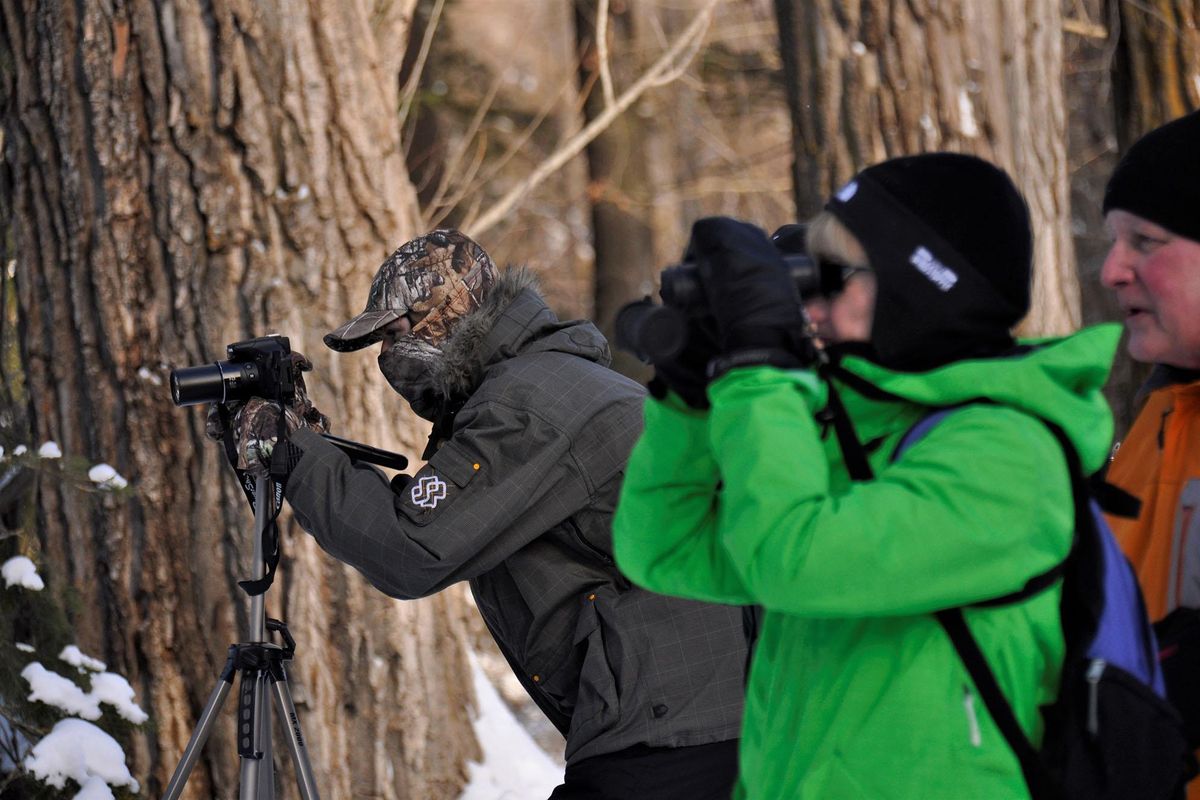Bird counters fly high from field day

The first thing a hunter might notice on an outing with serious bird watchers is their attention to detail.
A half century of hunting has honed my eye for observing movement or contrast that betrays a critter’s location. There’s an art to distinguishing the ear or rump of a deer that’s otherwise totally obscured by trees and brush.
But when it comes to hearing a tweet in the distance, picking out little grayish birds (LGBs) flitting through through the branches or identifying distant waterfowl, the Spokane Audubon Society members I joined in the field last week kicked my butt.
They were out for the local survey in the Audubon Society’s annual Christmas Bird Count, breaking into groups to canvas a 15-mile circle in north Spokane.
It’s a birding field trip and a social event that brings veteran birders and newbies together. They walk routes packing their spotting scopes, binoculars and cameras while chitchatting about everything birds.
While they’re soaking in the camaraderie, the citizen scientists identify species of all sizes by their colors, shapes, flight and even without seeing them by their songs.
“Song sparrow,” Curtis Mahon said without hesitation as the common but inconspicuous LGB worked over a weed for its seeds 20 feet away.
At 15, Mahon was the youngest in a group surveying the Little Spokane River in the Fairwood area on Jan. 4.
Asked what school he attended, he said, “I’m doing school online. That allows me to get out birding more often.” He bubbled with enthusiasm for each species find.
Having a teen along outdoors with the temperature lurking in the teens was a luxury for the group of adults led by Kim Thorburn. With fingers cold and feeling thick like sausages, Mahon deftly entered the species and numbers of individual birds on his smartphone as group members counted and called out their sightings.
The eBird application on his phone immediately transferred the information to local and national databases. The app also provides identification information, including audio of bird calls, to help with keying out any unfamiliar species.
Many of the birds could be identified as easily as old friends. Even then, they occasionally prompted discussion and updating.
“Winter wren,” one observer said as a small, dark stubby-tailed bird flew a short way low to the ground through the trees.
“It’s name in this region has been changed to Pacific wren,” said Thorburn. The name winter wren is linked to its breeding behavior, which can start in February as indicated when the tiny birds resume their song-making, characterized by long strings of delightful notes, she said.
The best part about being out with a group of birders is the buzz.
They talk about the best values in optics and cameras for their hobby, which many of them take to a high level of effort, exertion and expertise.
Most of them are connected by email and other services to be informed about rare bird sightings and trends.
The unusual occurrence of the red-flanked bluetail near Lewiston (in a detour from Asia) was discussed by the group. Several of the local volunteers had already driven to Hells Gate State Park to add the bird to their life lists and snag a photo.
Varied thrushes are turning up in unusually high numbers in the area this winter – “There’s never been so many,” Thorburn said.
And an irruption of lovely-feathered Bohemian waxwings is being confirmed. Irruption is the term for a dramatic, irregular migration of large numbers of birds to areas where they aren’t typically found, at least in such high counts.
On the other hand, the group pondered the unusual dearth of snowy owls – only one had been sighted in the region at the time. The ghostly-looking owl is a treat that lures even couch-potato birders out on winter roads for a sighting.
“We haven’t been seeing the redpolls and winter finches,” Thorburn said. “These are one-time things or trends we see as certain species show up and others are missing. It generally has something to do with the availability of their preferred food.”
American robins were plentiful in some areas. Many people think robins fly south for winter because they don’t see them hunting worms in their yards or nesting in the tree by the bedroom window. Some robins do head south, but Spokane is in their year-round range where they turn winter feeding habits to available food, such as fruit clinging to trees and shrubs.
“At least 60,” said Sandy Schreven as the group counted robins flocking to the high branches of naked cottonwoods along the Little Spokane River.
A northern hawk owl was the only rarity in the Spokane area reported when the several Audubon groups gathered at a north side pizza place after a full day of surveying their sections.
“I like to go out to do the Christmas Bird Count,” said Thorburn, who birds on her own or with smaller groups year around.
“It’s a treasure hunt. You’re always going to find something interesting.”